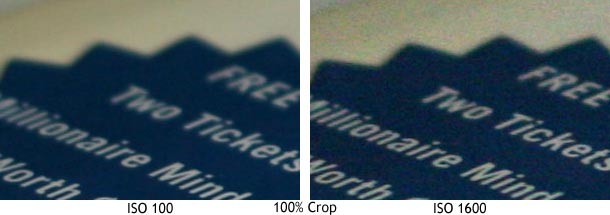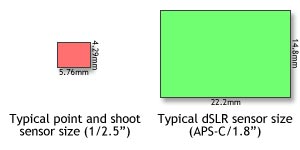|
|||||
|
What is ISO? ISO stands for International Standards Organization, but it is actually just the sensitivity of the film or digital sensor to light. You may have seen settings like ISO 100, 200, 400, 800, 1600, etc. A higher number means that the film or sensor is more sensitive to light, and each time the number doubles, it is twice as sensitive as the previous ISO sensitivity. So ISO 200 is two times more sensitive than ISO 100, and ISO 400 is two times more sensitive than ISO 200. Back in the days of film, you had to change to a different roll of film if you wanted to change the ISO, but digital cameras allow you to just press a button to change your ISO. Summary: ISO is the sensitivity of the film or sensor to light. A higher number means higher sensitivity to light. How Can I Apply This to My Photos? So let's say you're in a somewhat dim theater and you can't or don't want to use your flash; the solution? Increase the ISO. Or say you're shooting an indoor sporting event; if you want to have a fast enough shutter speed to freeze the motion, you need to crank up your ISO. Summary: If you're in a dark place where you can't or don't want to use flash, increase the ISO. The Downsides of Using a High ISO Alright, so if using a high ISO can capture things with faster shutter speeds, then why doesn't everyone just use a high ISO all the time? There are actually two answers to this: first of all, sometimes people want to use a slower shutter speed to capture motion, and second, there are technical limitations. The higher your ISO is, the more noise you have in your photograph. Now, let me set this straight: photographs don't make sounds, noise refers to the graininess in photo that reduce its clarity, which is demonstrated below:  Also, another thing to note is that noise from high ISOs also tends to show itself more in the shadows than in highlights; therefore, the effects of a higher ISO are more apparent when shooting darker scenes than when shooting brighter scenes. Summary: Higher ISO = faster shutter speed = more noise (graniness). Are dSLRs Better at Handling Noise? Well, yes and no. The reason why digital SLRs are better at handling noise is not because of the fact that they are single lens reflex cameras but because they have larger image sensors than most point and shoot cameras with the same pixel count. That means that the photosites are larger on a digital SLR's sensor, allowing them to collect more light, giving them a cleaner signal-to-noise ratio when there isn't as much light. Therefore, smaller cameras with small sensors tend to have a lower ISO range (typically 100-400) and there is more noise in their pictures throughout the ISO range.  Summary: Digital SLRs tend to have larger image sensors than point and shoots with the same megapixel count, therefore they handle noise better. When to Use What ISO As mentioned in the previous article about aperture and shutter speed, if you're shooting a subject without flash you should try to keep your shutter speed faster than the 1/focal length rule in order to obtain a sharp image. Here's a quick reference table for most situations, but it's really up to your personal judgment on which ISO setting you should use. Just keep in mind that a higher ISO means grainier pictures, but if it's not high enough you might not even get the picture.
|
|||||
Back to Main Digital camera help, tips on digital cameras, and camera techniques. Canon Powershot camera help and Nikon digital camera tips. Canon SLR and Canon camera tutorials. Nikon SLR, Panasonic, Casio, and Pentax digital camera technique. All content on these pages are Copyright 2007-2011 Yu Jiang Tham. No content from this website may be used or duplicated without express permission from the owner. Please email support@facethelight.com for more information. FaceTheLight.com is part of The Happywalrus Network - Get Free Stuff and Make Money! |